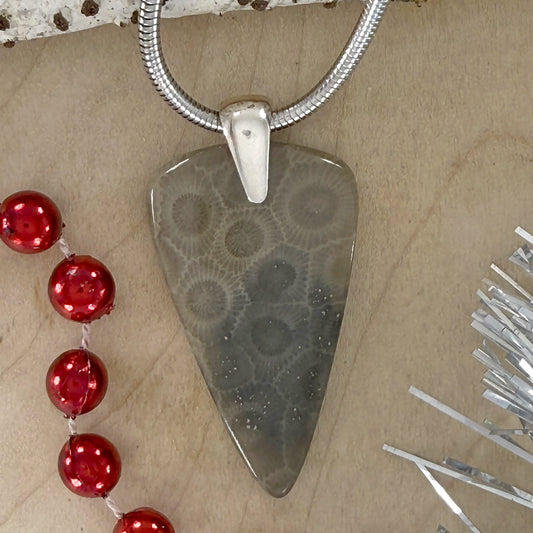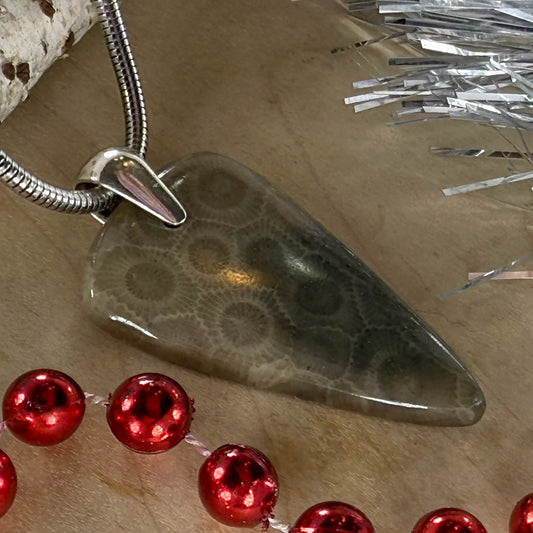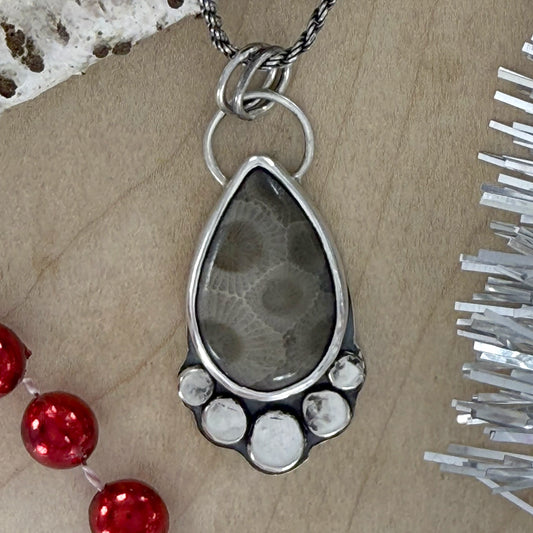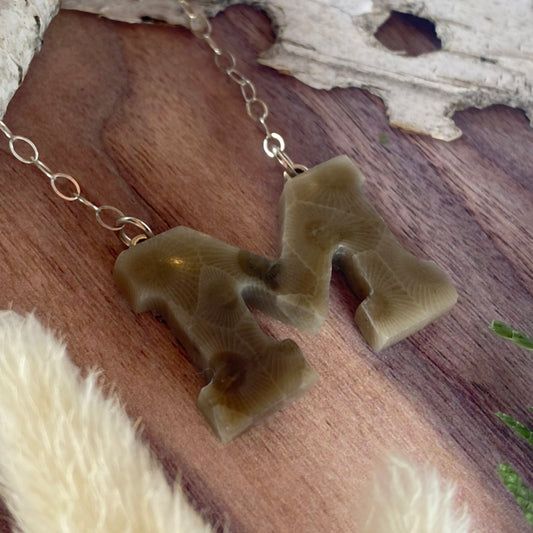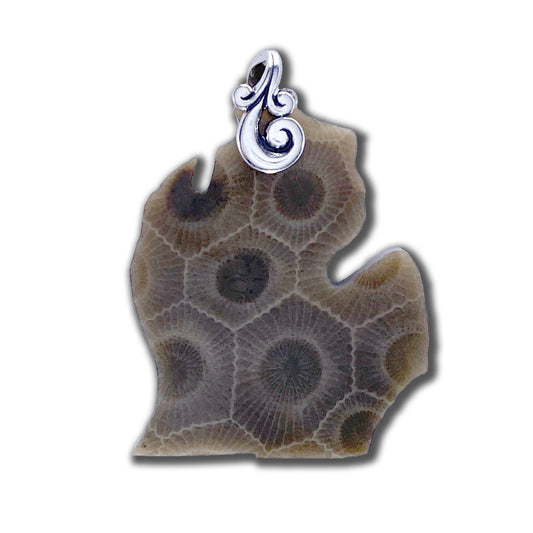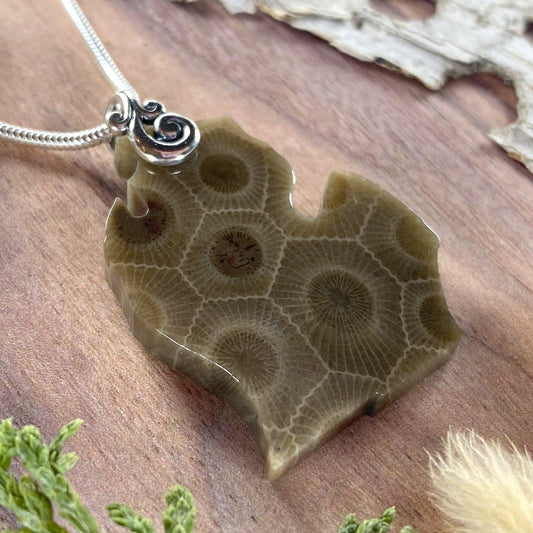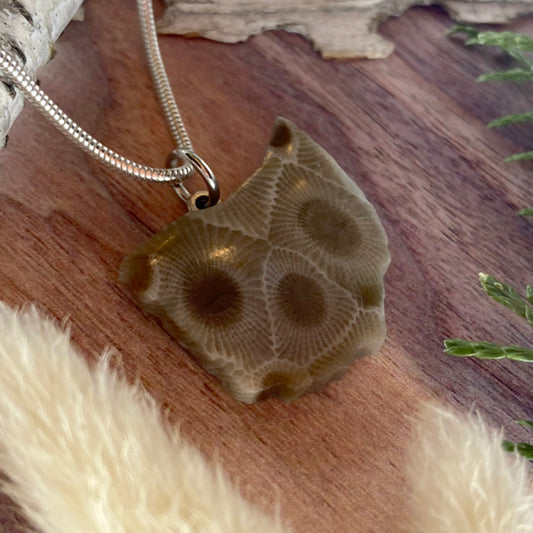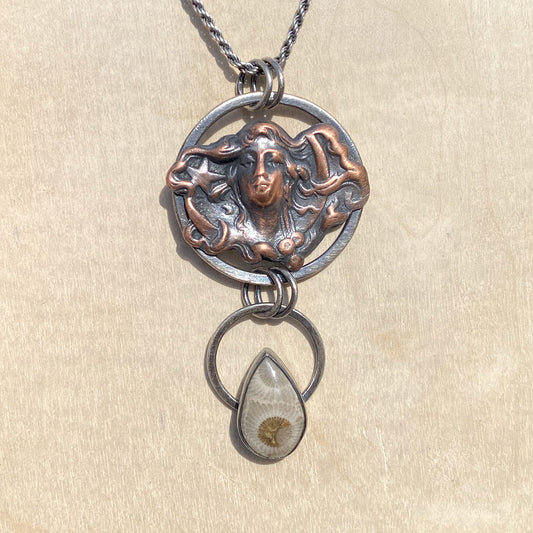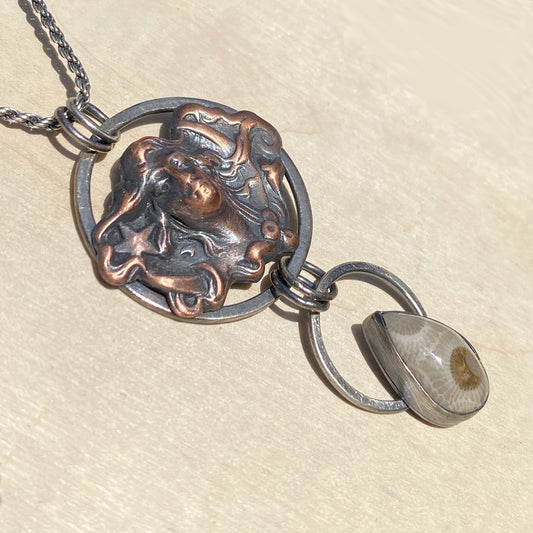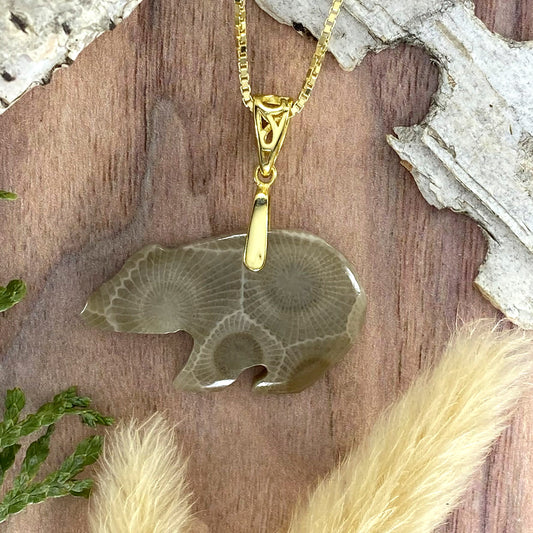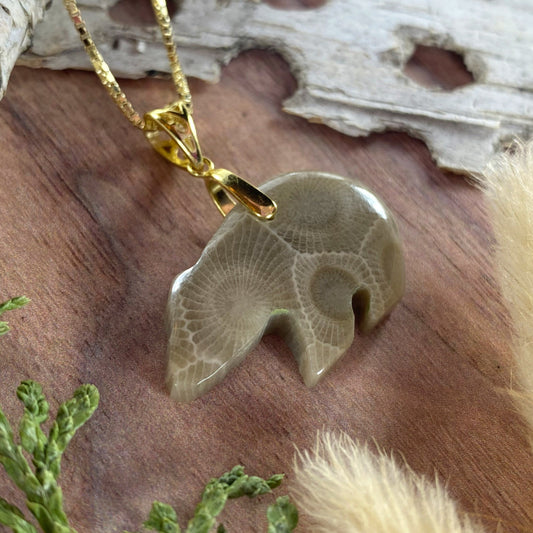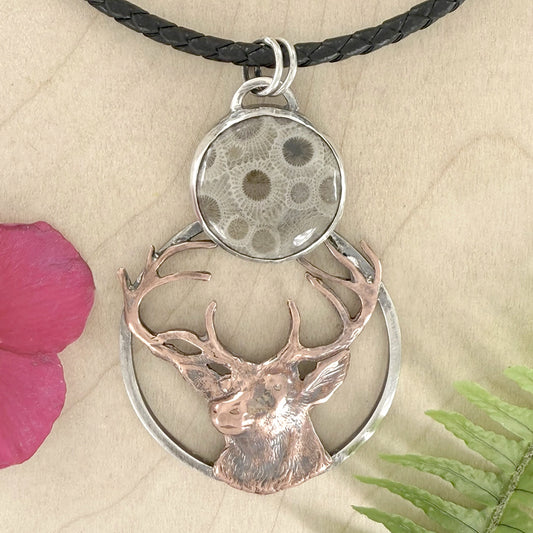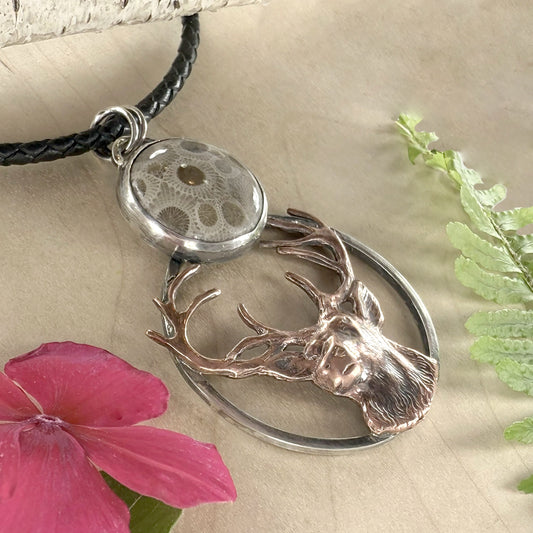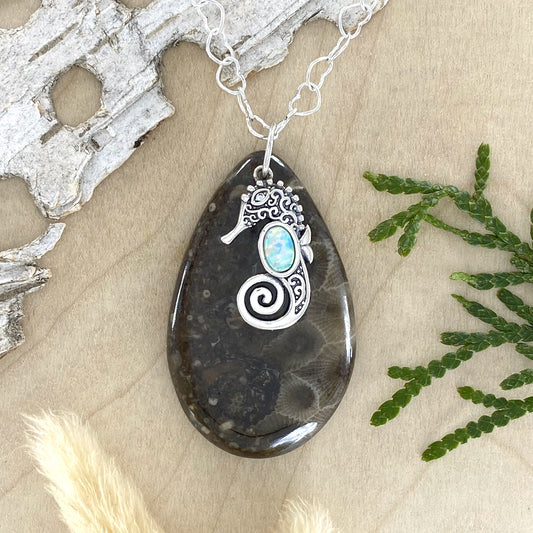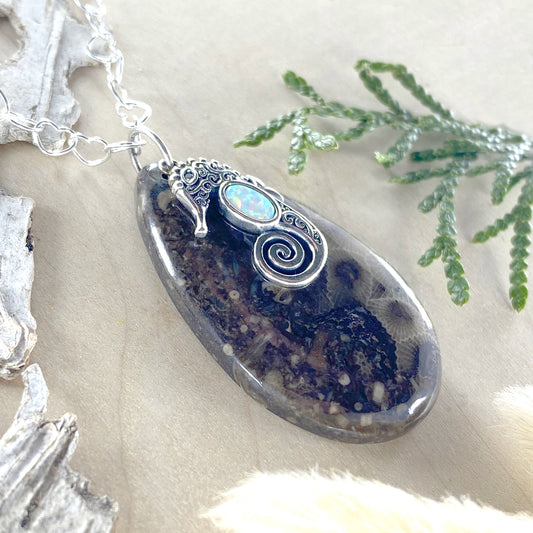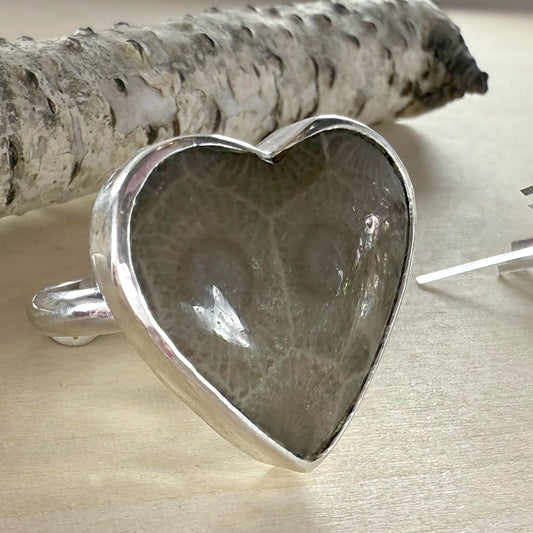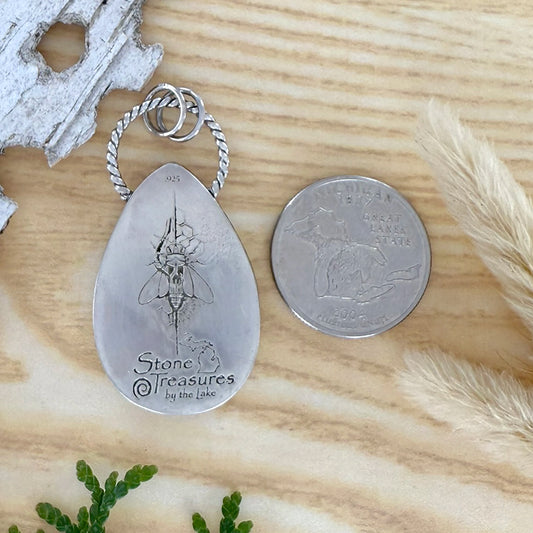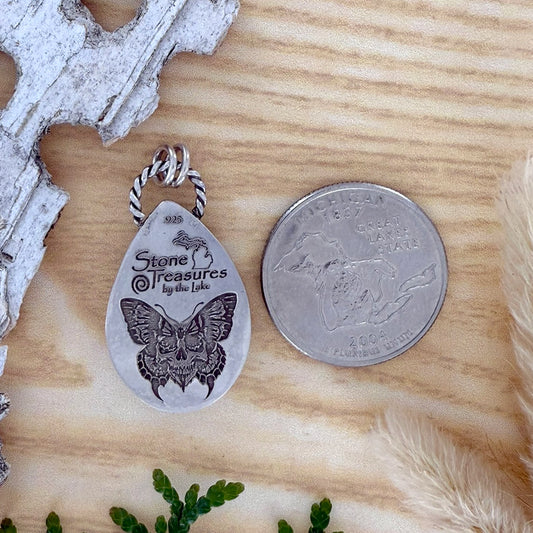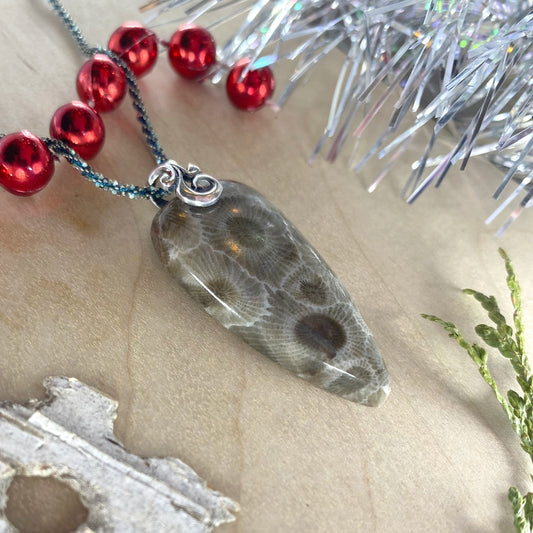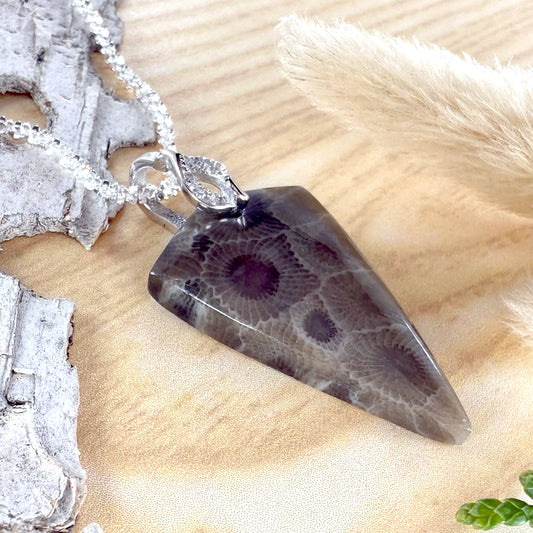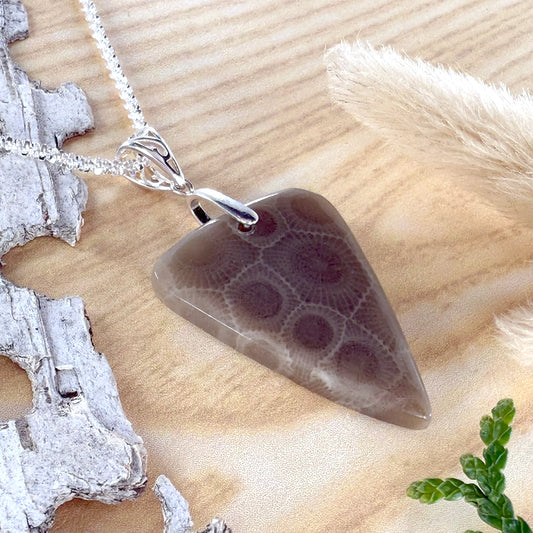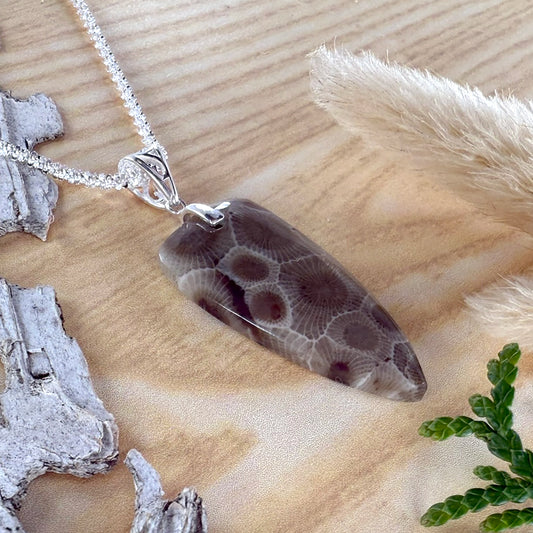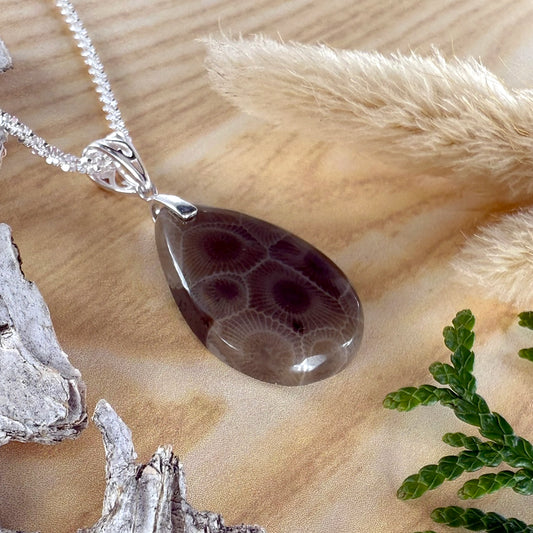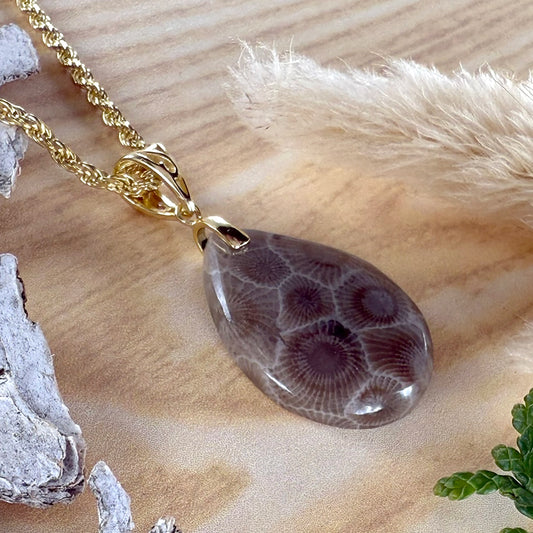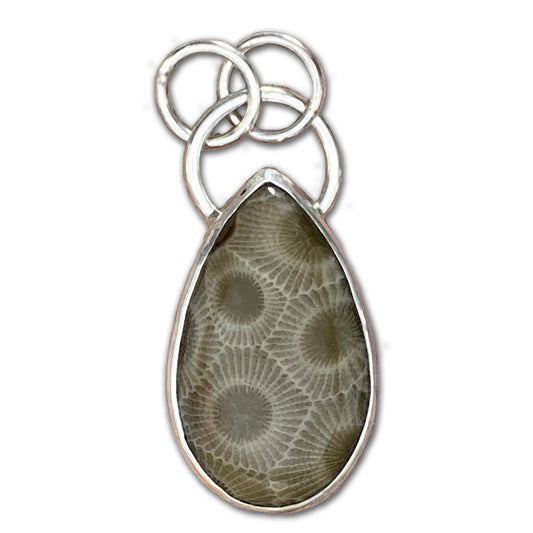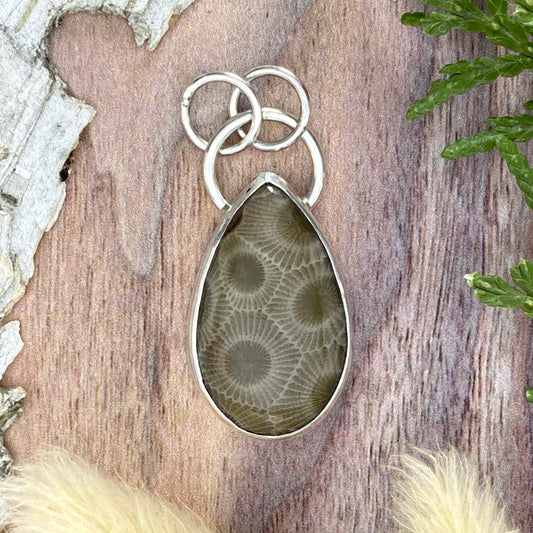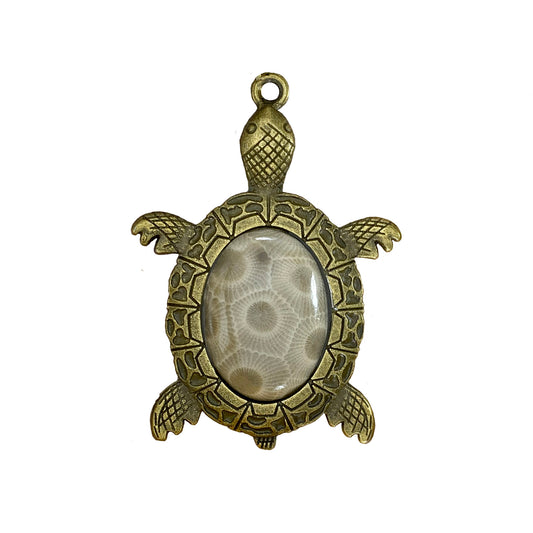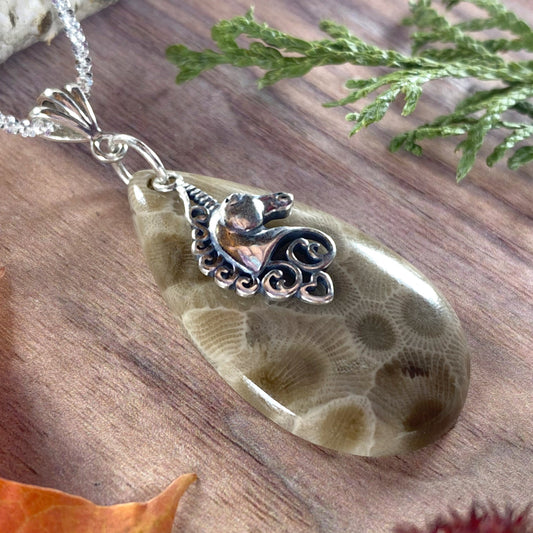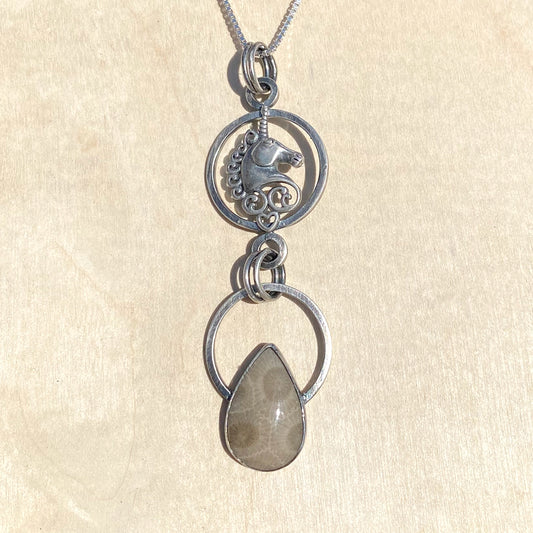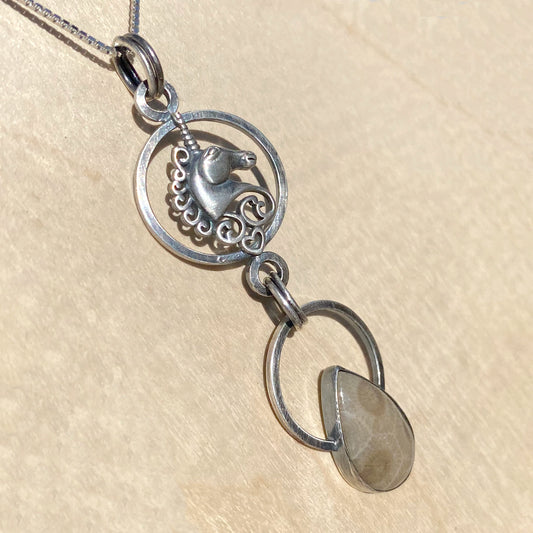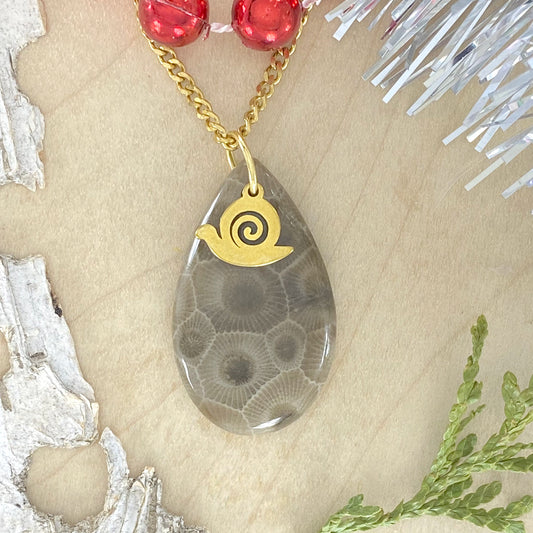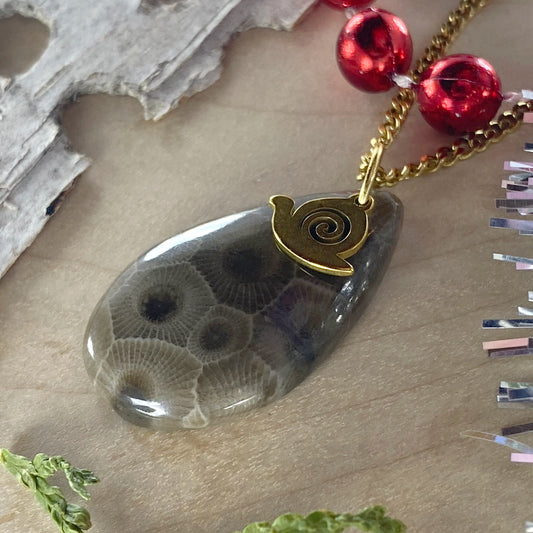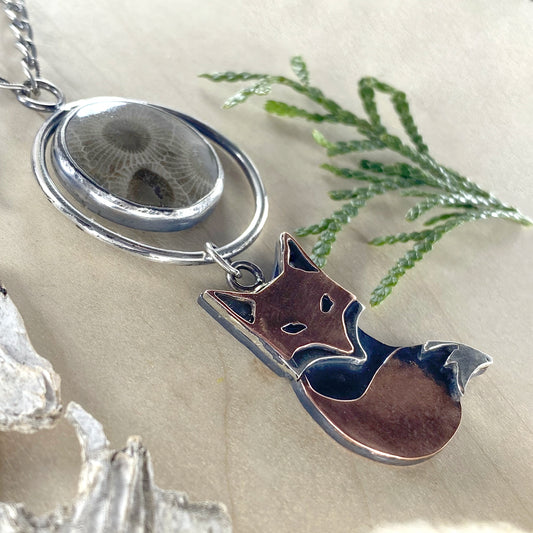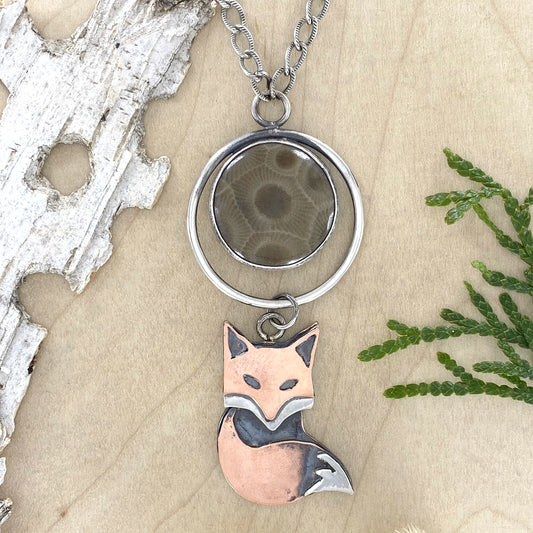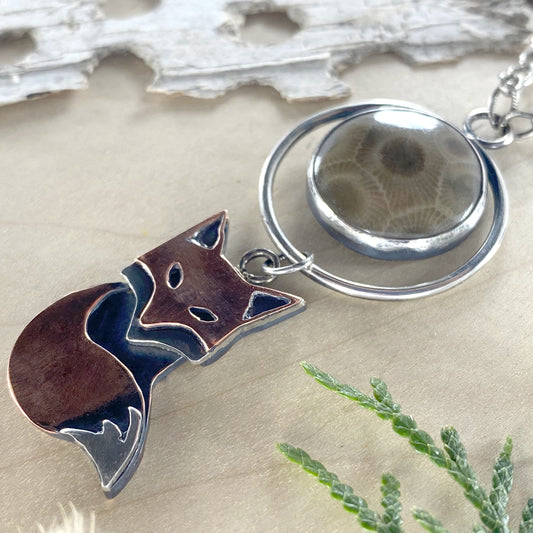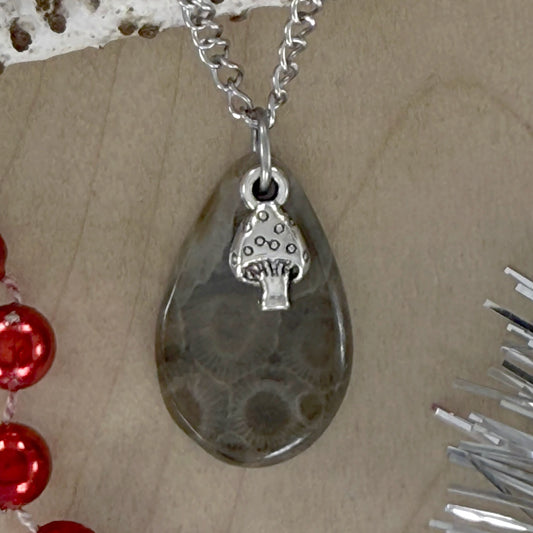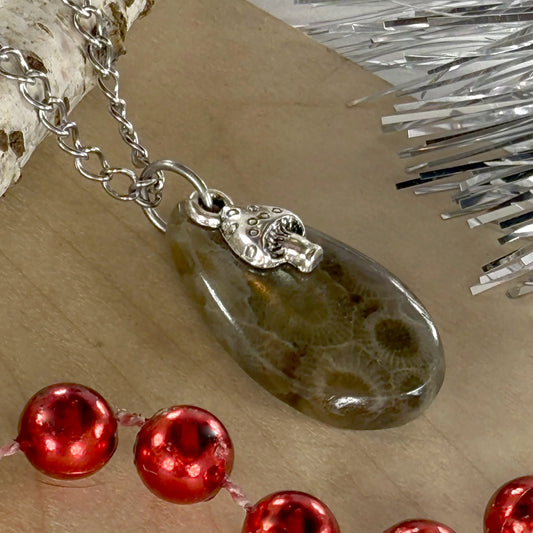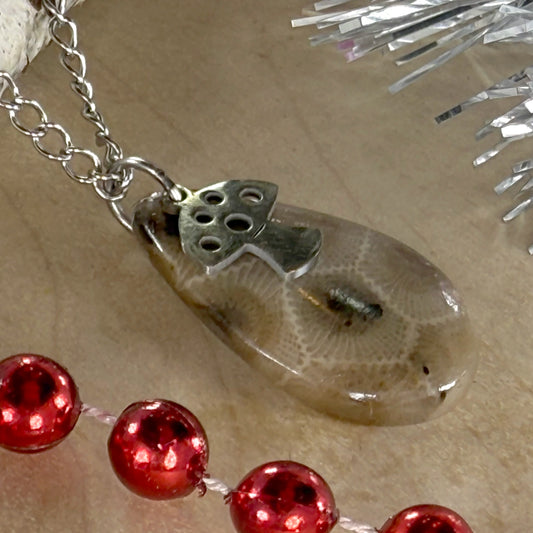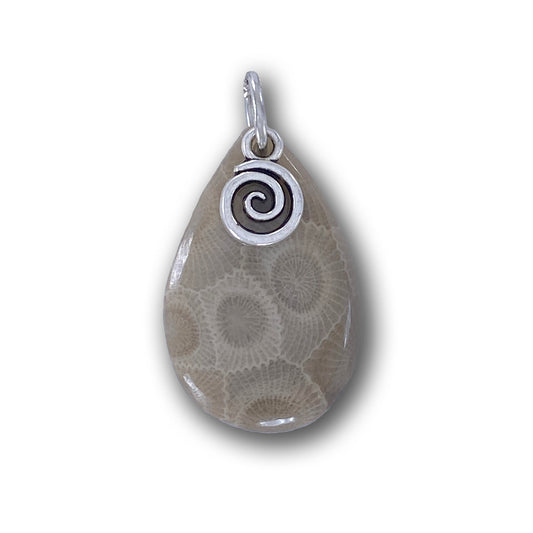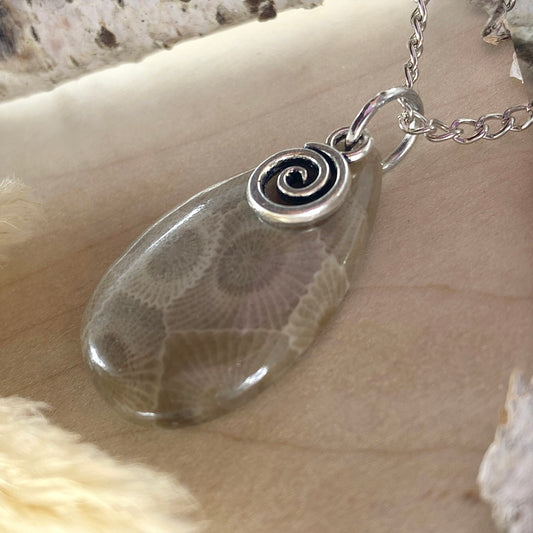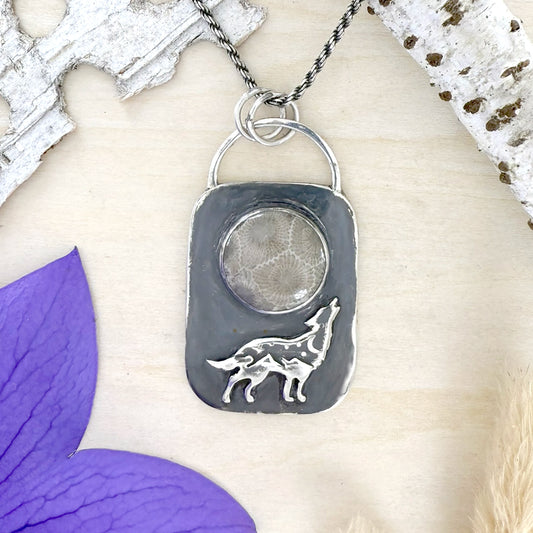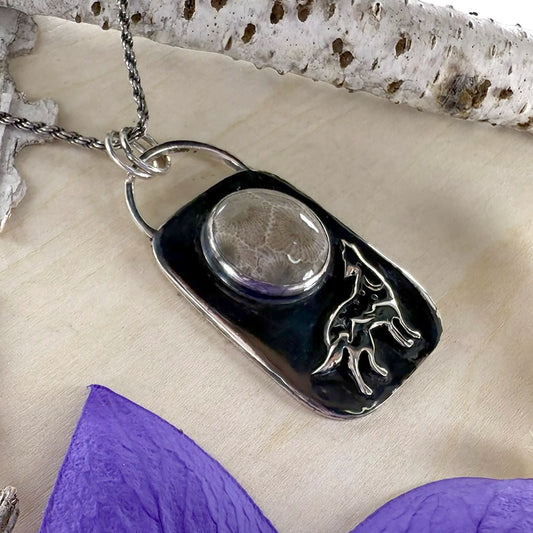Petoskey stones are older than the dinosaurs, which roamed the earth beginning 165 million years ago. Though evidence of dinosaurs can be found almost everywhere around the world, it is not so with Petoskey stones. Mostly, they are found in Michigan, though some show up in Illinois, Indiana and Iowa.
Petoskey stones began life as coral planulae, free-swimming larva that propel themselves around in the warm waters of tropical seas with tiny hairlike projections. Eventually, they drop to the bottom of the sea. There, they anchor onto something solid and progress into the polyp stage, growing and dividing, making exact copies. To protect themselves, they secrete calcite to make a hard, cuplike outer covering, or exoskeleton. Like a snail, the soft-bodied coral lives inside the hard exoskeleton and uses its tentacles to snatch food that drifts by.
During the ancient Devonian Period of the Paleozoic Era (ca. 350 million years ago), these living coral existed in a warm, shallow, saltwater sea filled with other marine life. At that time, today’s Michigan was actually located far south, near the earth’s equator. These Hexagonaria percarinata corals - the only variety that forms Petoskey stones - thrived in tropical reefs until the earth’s tectonic plates moved, pushing Michigan northward and above sea level, until it reached today’s 45th parallel, creating dry land formations. In the process, skeletons of these tightly packed, six-sided corallites became fossilized, forming Petoskey stones. Their distinctive dark centers, called “eyes”, were actually the mouths of the coral. The distinctive lines surrounding the eyes that make the stones so attractive were once tentacles that brought food into the mouth.
The movement of the tectonic plates buried the fossils deeply. Subsequent weathering wore down the overburden and helped bring them closer to the surface. Some 70,000 years ago, The Laurentide Ice Sheet, two miles thick in places, ground pieces off the original coral formation (c. 90,000 and 20,000 years ago) and spread them around lower Michigan. The glacier picked up the coral colonies that had weathered to the surface, froze to them, and incorporated them within its body, and carried them south. In the northern quarter of the state the glacier gouged out and freed billions or trillions more from the calcareous shales in which they were entombed. As the glacier moved across the state, it left tremendous numbers of coral colonies scattered across Michigan and undoubtedly carried some into Illinois, Indiana and Iowa.
When the ice melted, the Petoskeys were left behind as glacial erratics, stones carried by the glacier to places where they don't belong. During the process of being dug out and carried over bedrock by the glaciers, many of the Petoskey stones became rounded off. The enormous weight of the ice also scratched some and completely crushed others. Today, wave action continues to round their contours, often to the size and shape of an oval bar of soap. Those that are not found in or near water, and therefore haven’t been subjected to the tumbling action of the waves, are less rounded and come in much more irregular shapes.
The name Petoskey appears to have originated late in the 18th century. Its roots stem from an Ottawa Native American legend.
In 1965, the Petoskey Stone became the state stone of Michigan.
Petoskey Stone is not only cherished for its beautiful appearance but is also believed to possess several metaphysical properties. Here are some commonly attributed benefits:
Grounding Energy: Petoskey Stone is thought to provide a strong grounding influence, helping individuals connect with the Earth and their surroundings. It can promote stability and balance in one’s life.
Enhancing Intuition: This stone is said to boost intuition and enhance one's ability to perceive subtle messages and energies, making it a valuable tool for meditation and self-reflection.
Emotional Healing: Many believe Petoskey Stone aids in emotional healing, helping to release negative emotions and fostering a sense of calmness, peace, and well-being.
Fostering Connection: As a powerful connector to nature, Petoskey Stone is often associated with the wisdom of the natural world. It is said to help strengthen one’s connection to the environment and promote a sense of unity with all living things.
Manifestation: Petoskey Stone is thought to aid in the manifestation of dreams and intentions, using its grounding energy to help bring one’s aspirations into reality.
Spiritual Growth: This stone is also revered for its ability to support spiritual growth and transformation, allowing individuals to embark on their personal journeys with clarity and purpose.
Whether used in meditation, worn as jewelry, or simply kept in one’s space, Petoskey Stone is cherished as a powerful ally on the path of personal and spiritual development. Always remember, the effectiveness of metaphysical properties can vary from person to person, and personal experiences may differ.

 Sold out
Sold out
 Sold out
Sold out

